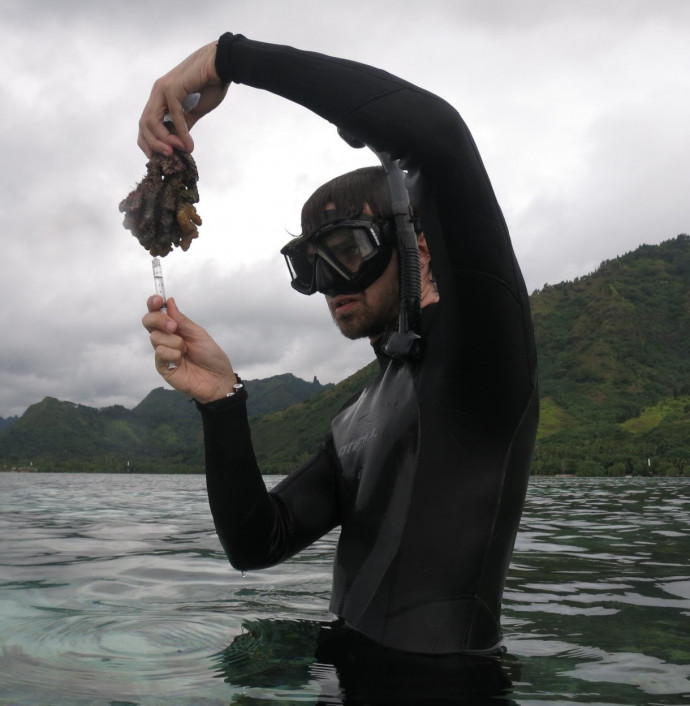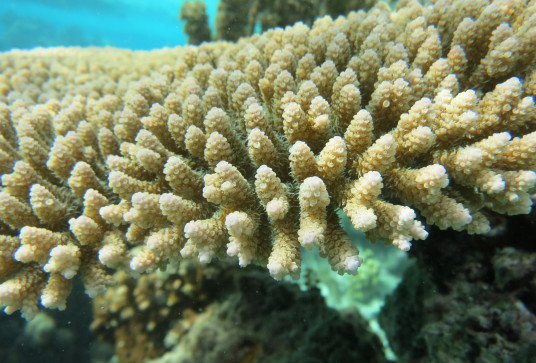“Supercorals” fight for survival: A climatic battle

Dr Clinton Oakley from Te Herenga Waka—Victoria University of Wellington will lead a team to investigate what makes certain corals “super”, with hopes of developing reefs that are more resistant to climate change
Published on 2 Whiringa-ā-rangi November 2023
Once a rare phenomenon, coral bleaching events are now increasing in frequency and severity because of climate change. Corals, marine animals closely related to jellyfish, often contain microscopic algae that help give them striking colours. Both coral and algae benefit from their close relationship: the coral provides shelter for the algae, and the algae provide nutrition for their hosts through photosynthesis. This relationship is disrupted when sea temperatures rise and the algae are expelled from the coral host, leaving the coral pale (“bleached”) and unable to survive.

A healthy Acropora coral (photo credit: Dr Clint Oakley)
So how can our coral reefs be saved? Corals that are resistant to bleaching, known as “supercorals”, could be the key. Dr Oakley has been awarded a Marsden Fund Standard grant to research the molecular mechanisms of coral bleaching. By investigating what makes some corals “super”, he aims to inform more direct interventions.
The current model of coral bleaching – the “oxidative theory” – suggests that corals expel their algal partners when their antioxidant pathways are overwhelmed by toxic reactive oxygen species, a by-product of their increased metabolic rate. However, the precise mechanisms by which this might occur remain unclear. Dr Oakley and his international team will use a combination of new molecular systems and techniques to track the bleaching process in coral cells with unprecedented resolution. By measuring the oxidation of thousands of proteins throughout the coral cell at high temperatures, the team will determine whether bleaching is due to indiscriminate damage or the triggering of specific bleaching pathways.
They will then analyse multiple coral species to reveal if these bleaching mechanisms are widespread, and in doing so, identify specific genes which influence bleaching. Finally, the team will investigate existing corals with higher bleaching resilience to validate their findings and define what would make a coral “super”. Their findings will have important implications for reef restoration strategies in a warming world.
